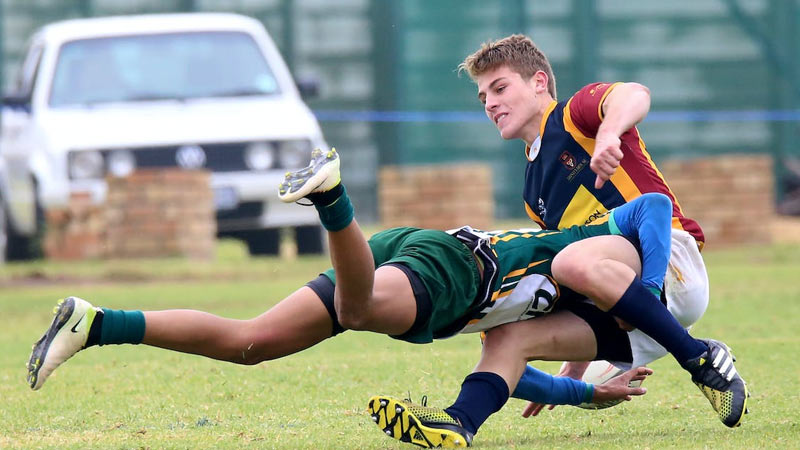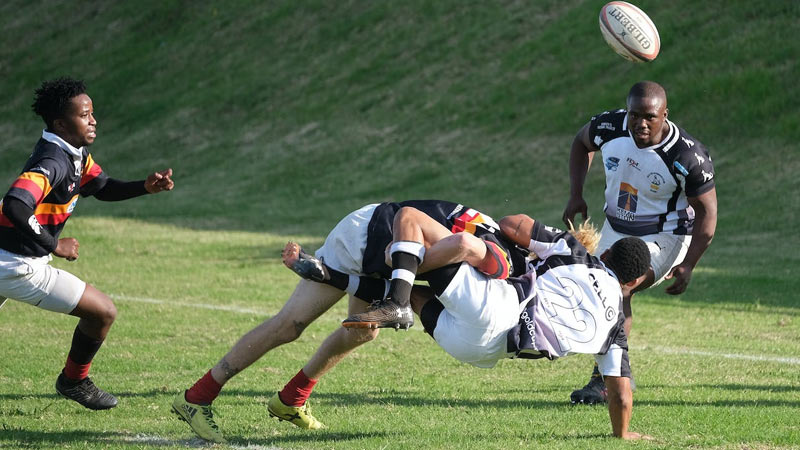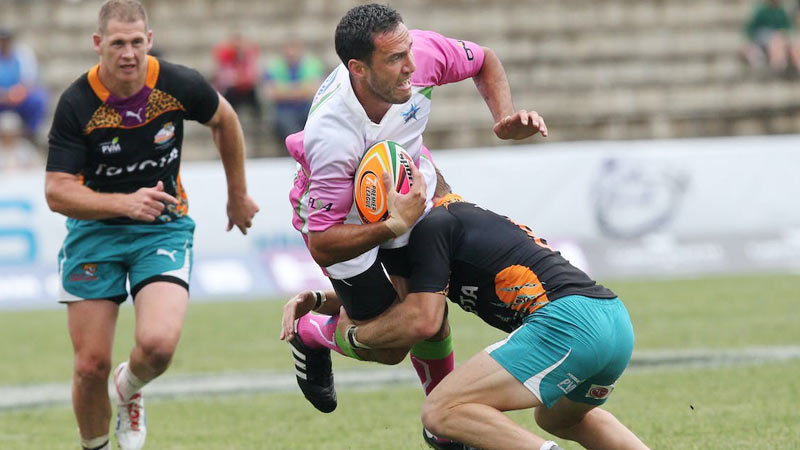In the adrenaline-filled world of football, the football angle tackle stands as a fundamental defensive technique that separates average defenders from exceptional ones.
As players charge down the field, the angled tackle becomes a crucial weapon to bring down ball carriers and disrupt offensive plays.
Mastering this skill involves not only physical prowess but also astute positioning, quick decision-making, and a keen understanding of the opponent’s movements. With the right execution, the angled tackle enables defenders to cut off the ball carrier’s path, giving them the upper hand in open-field situations.
As the heartbeat of defensive strategies, the football angle tackle remains an essential component of any player’s arsenal, ensuring the art of containment and contributing to the overall success of the team’s defense.
What Is Football Angle Tackle?
A football angle tackle is a fundamental defensive technique used in American football to bring down an opposing ball carrier. It involves a defender approaching the ball carrier at an angle rather than head-on, which allows them to gain leverage and control over the tackle.
This technique is often used to prevent the ball carrier from evading the tackle by changing direction. The defender typically aims to make contact with their shoulder or chest against the ball carrier’s lower body, usually around the hips or thighs, and wraps their arms securely around the opponent.
By using the angled tackle, defenders can effectively reduce the chances of the ball carrier breaking free and gain better control over the situation, contributing to the overall success of the defensive play.
It’s a fundamental skill taught at all levels of American football to ensure the defense can stop the opposing team’s advance and regain possession of the ball.
How To Do Football Angle Tackle?

Executing a football angle tackle effectively requires proper technique and timing. Here are the key steps broken down into paragraphs:
Read the Play
Before attempting an angle tackle, it’s crucial to read the play and identify the ball carrier’s direction and potential moves. This involves recognizing the player with the ball and assessing their speed, agility, and the angle they are taking.
Choose the Correct Angle
Once you’ve identified the ball carrier’s path, you need to select the appropriate angle to approach them. Ideally, you want to take an angle that cuts off the ball carrier’s route and limits their options for evasion.
Maintain Proper Body Position
As you approach the ball carrier, maintain a low and balanced stance with your knees bent, back straight, and head up. Keep your feet shoulder-width apart, which provides stability and agility.
Leverage and Contact
The key to a successful angle tackle is gaining leverage. As you get close to the ball carrier, aim to make contact with your shoulder or chest against the lower body, around the hips or thighs. This contact point allows you to drive through the tackle effectively.
Wrap Up Securely
Simultaneously with contact, wrap your arms securely around the ball carrier’s legs or waist. Lock your hands together, forming a strong grip to prevent the ball carrier from breaking free.
Drive and Drive
Once you’ve made contact and secured the ball carrier, use your leg drive and body momentum to bring them down. Keep your feet moving and drive through the tackle while maintaining control. This may involve lifting the opponent’s legs off the ground to disrupt their balance.
Finish the Tackle
To complete the tackle, take the ball carrier to the ground safely. Ensure you maintain control and avoid any unnecessary roughness penalties. Keep your head up and maintain proper tackling form throughout the process.
Follow Through
After the tackle is complete, be ready to get up quickly and prepare for the next play. Football is a fast-paced game, and you may need to recover or pursue other opponents immediately.
Practicing these fundamental steps in football angle tackling is essential for defenders to become effective at stopping ball carriers and preventing them from advancing down the field. Consistent training and attention to technique are key to success on the football field.
10 Football Tackling Drills
Here are 10 football tackling drills-
Angle Tackle Drill

This drill focuses on teaching defenders how to take the correct angles to tackle ball carriers effectively. Set up two cones, one representing the defender and the other the ball carrier.
The defender must sprint and tackle the imaginary ball carrier at the correct angle, simulating real-game situations.
Form Tackling Drill
In this fundamental drill, players practice proper tackling techniques. Coaches instruct players to maintain a good breakdown position, keep their heads up, and initiate contact with their shoulders. Partners then take turns tackling with control and precision.
Open-Field Tackling Drill:
This drill hones players’ ability to tackle in open-field situations. A ball carrier and a defender start ten yards apart.
The defender must close the gap quickly and execute a sound tackle while preventing the ball carrier from reaching a designated end zone.
Leverage Tackle Drill
Teaching players how to use leverage effectively can make a significant difference in tackling success. In this drill, defenders work on getting under the ball carrier’s pads and driving through their hips to bring them down.
Rip and Swim Drill
This drill emphasizes defeating blockers to reach the ball carrier. Players practice “ripping” through the blocker’s arms and “swimming” over them to make the tackle.
Strip and Rip Drill
Defensive players learn how to strip the ball from the ball carrier while executing a tackle. The emphasis is on securing the tackle and using the other arm to attempt a strip before the whistle blows.
Read and React Drill
This drill enhances players’ ability to read the ball carrier’s movements and react accordingly. Defenders learn to diagnose plays quickly and take efficient angles to make tackles.
Pursuit Drill
In this high-intensity drill, players practice pursuing the ball carrier from different angles. The coach rolls the ball or throws it to a designated ball carrier, and defenders must sprint to make the tackle, simulating game-like situations.
Sideline Tackling Drill
This drill focuses on preventing ball carriers from gaining extra yards along the sideline. Defenders practice “funnelling” the ball carrier toward the sideline and executing tackles to keep them in bounds.
Live Tackling Drill
This full-contact drill involves live tackling against teammates in controlled scrimmage scenarios. It allows players to practice tackling in a realistic game environment, improving their confidence and tackling efficiency.
Implementing these tackling drills in football practices not only sharpens players’ tackling skills but also emphasizes the importance of safety and proper technique.
Coaches should ensure that players execute tackles with control and minimize the risk of unnecessary injuries during these drills.
Where Should The Head Be On The Angle Tackle?

During an angle tackle in football, the positioning of the head is critical for both the tackler’s safety and effectiveness in bringing down the ball carrier.
Proper head placement helps reduce the risk of injury and allows the defender to execute a successful tackle.
Here are the key points on where the head should be during an angle tackle:
Head-Up Position:
The most important aspect of head placement during an angle tackle is to keep the head up and eyes on the ball carrier. This ensures that the defender maintains proper awareness of the ball carrier’s movements and can react quickly to any changes in direction.
Chin Up, Eyes on the Hips:
Coaches often teach players to keep their chin up and eyes focused on the ball carrier’s hips. The hips provide valuable clues about the ball carrier’s intended direction, allowing the defender to anticipate their movements and make a precise tackle.
Avoiding Helmet Contact:
To reduce the risk of head injuries, defenders should avoid initiating contact with the top of their helmets.
Tackling with the top of the helmet can lead to concussions and other serious head injuries for both the tackler and the ball carrier.
Leading with the Shoulder:
Instead of using the head as the primary point of contact, the defender should lead with their shoulder.
This technique protects the head and neck while allowing the player to generate power and drive through the ball carrier for a more effective tackle.
Wrapping Up Safely:
As the defender makes contact with the ball carrier, they should focus on wrapping their arms securely around the opponent’s legs or waist.
The head should be on the outside of the tackle, away from the ball carrier’s body, to avoid getting tangled up in the tackle.
By maintaining a head-up position and following proper tackling technique, defenders can significantly reduce the risk of head and neck injuries while executing successful angle tackles on the football field.
Coaches play a crucial role in teaching and reinforcing these fundamentals during practice sessions to ensure player safety and effective play on game day.
FAQ
Q: What is a football angle tackle?
A: The football angle tackle is a defensive technique used by players to bring down ball carriers. It involves approaching the ball carrier from an oblique angle to gain leverage and control over the play, particularly in open-field situations.
Q: Why is the angle tackle important in football?
A: The angle tackle is crucial in football as it allows defenders to cut off the ball carrier’s path and prevent them from gaining extra yards. It is particularly effective in open-field situations, where defenders must cover ground quickly to stop the advancing ball carrier.
Q: What are the key points to remember during an angle tackle?
A: During an angle tackle, players should keep their heads up, eyes on the ball carrier’s hips, and avoid helmet-to-helmet contact. They should lead with their shoulder, wrap up the ball carrier securely, and position their head on the outside of the tackle to avoid head and neck injuries.
Q: How can players improve their football angle tackle technique?
A: Improving football angle tackle technique involves practice and coaching. Players should focus on proper positioning, quick decision-making, and reading the ball carrier’s movements. Regular tackling drills, including open-field scenarios, can help players refine their skills.
Q: Is the football angle tackle suitable for all defensive players?
A: Yes, the football angle tackle is a fundamental defensive technique that all players should learn and master. It is especially beneficial for players who often find themselves in one-on-one situations in open space, such as defensive backs and linebackers.
Conclusion
In the ever-evolving realm of football, the angled tackle retains its significance as a formidable defensive technique.
A well-executed angle tackle can be a game-changer, preventing big gains, thwarting offensive advances, and potentially leading to turnovers.
Through rigorous practice and coaching, players hone their ability to approach opponents from the right angles, driving the effectiveness of this essential skill.
Emphasizing the importance of head-up positioning, proper leverage, and safe tackling techniques, the football angle tackle not only strengthens defensive units but also promotes a culture of safety on the field.
As football continues to captivate fans worldwide, mastering the angled tackle remains a vital aspect of the game, keeping defenders ahead of the curve and contributing to the sport’s enduring legacy of strategy, skill, and athleticism.







